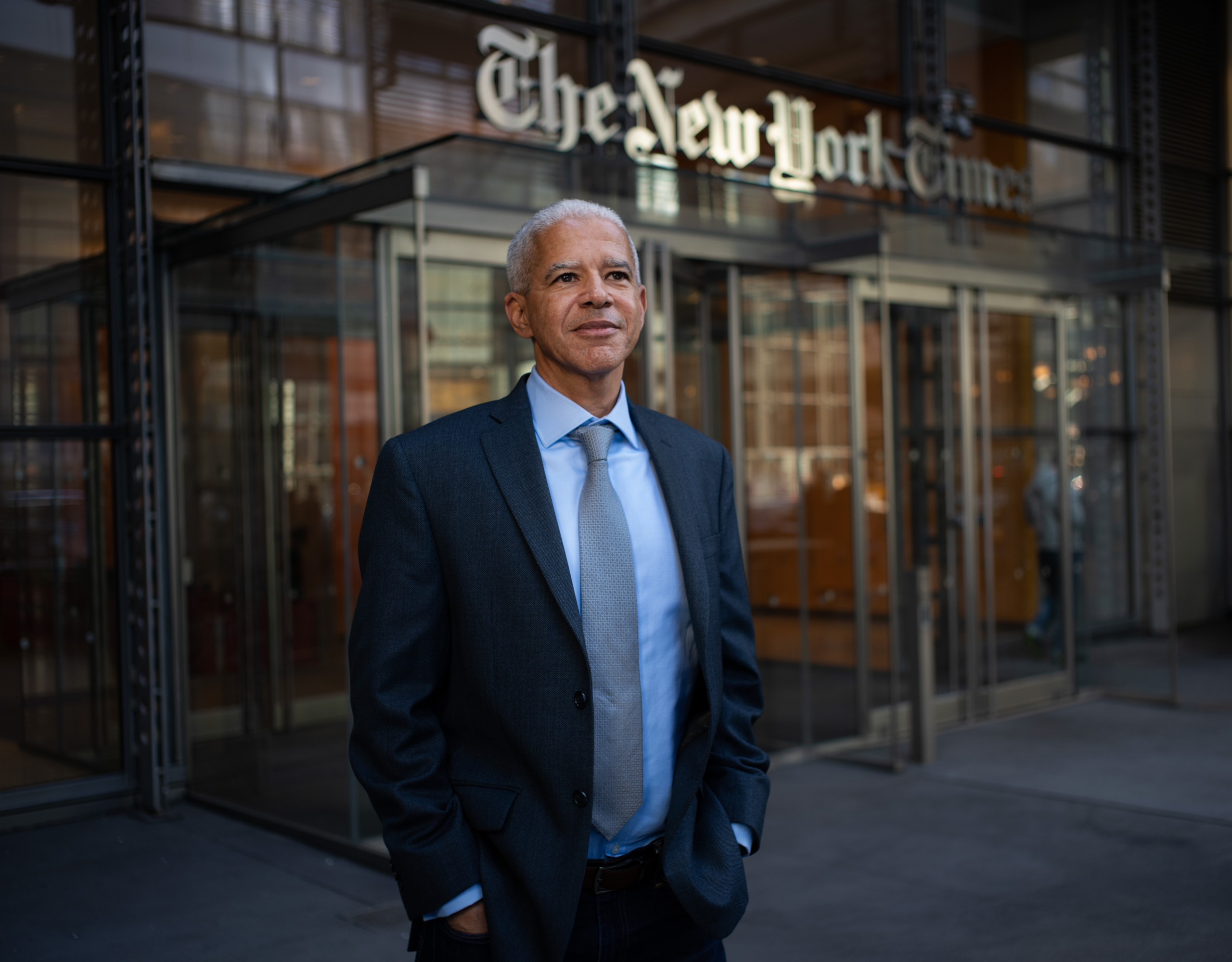In recent weeks, ever since Marc Lacey started running the Live platform at the New York Times, Sandy, his labradoodle, has been getting more walks. “I’m sure she’s wondering, ‘Oh my god, what happened?’ ” Lacey said. “ ‘He used to be gone all day at the office, and now he’s home and he’s walking me like mad.’ ” What happened is a lot: Live is an intense stream of briefings, blogs, and chats meant to update the Times audience as stories break; plus, the newsroom has had a turbulent year. Dog-walking is a good way to decompress.
Lacey, who is fifty-five, has spent the pandemic hunkered down at home in Montclair, New Jersey, a short train ride across the river from Midtown Manhattan. An avuncular presence on staff—“Marc commands tremendous respect in the newsroom,” Dean Baquet, the executive editor, said; “he is also truly open minded”—he’s been at the Times for twenty-one years, having arrived shortly after the website debuted. Throughout his tenure, Lacey has been closely involved in the newsroom’s digital transformation. In 2016, when he was the editor of the national desk, he joined the 2020 Committee alongside seven colleagues; together they produced a report detailing their aspirations for an ever more digital Times. When Live launched, it was primarily used for the roller coaster of political news during the Trump administration.
By January, when he took the helm, Lacey felt like he’d become an air traffic controller. “There’s all this incoming chatter,” he said. Reporters send in constant updates from the ground, which then need to be written, edited, and checked before they’re seen by millions of readers. “It really is scrambling to get it ready, people reading over each other, making sure it’s right.” The big stories of 2020—the coronavirus, the election, and the uprisings against police brutality and systemic oppression—presented particular challenges to Live, as each grew exponentially. Rather than producing incremental news articles, Live works by updating a single piece of coverage; tracking the pandemic, for instance, has required input from the paper’s China correspondents, then from reporters on the science desk, and then from politics. “The news is everywhere, and therefore every newsroom department is involved,” Lacey said. Soon, Live accumulated the longest thread of continual pandemic coverage found anywhere online. In the long term, Lacey expects that Live will become a routine part of every desk’s work.
Lacey’s new role also made him an assistant managing editor, placing him on the masthead and in a prominent position among Black leaders at the Times as the newsroom confronted its handling of racism in coverage and internally. In June, Black employees led the Times staff in protest of an opinion piece by Tom Cotton, a senator from Arkansas, that had called for military force to be used against racial-justice demonstrators; James Bennet, the editorial editor, quickly resigned. Two more high-profile departures followed: Don McNeil Jr., a science and health journalist, left after it was reported that he’d used an anti-Black slur on a Times-sponsored trip to Peru for high school students; Andy Mills, an audio producer, stepped down for his role in the discredited Caliphate podcast and misconduct reported at his past workplaces. Last week, the Times released the results of a staff-wide audit, which found that “the Times is too often a difficult place to work for people of all backgrounds—particularly colleagues of color, and especially Black and Latino colleagues.”
Lacey has been taking part in discussions about the Times’ work environment; in the aftermath of the Cotton piece, he moderated a company-wide Zoom meeting. “A whole lot of people want to be heard on changing the culture of the newsroom,” he said. “That really requires the leaders of the New York Times to be good listeners and to just hear people out.” When the top of the masthead released its staff review, which called for “sweeping change,” Lacey was encouraged. “I’ve worked on past efforts to diversify the Times, and this one seems different in that we’re being frank about where we are and laying out specific plans,” he said.
It’s possible that he could take on an even larger role: Baquet is approaching the end of his term, and Lacey’s name has been earmarked as one to watch as a contender for succession. “He listens, and he is willing to challenge some of journalism’s established orthodoxies,” Baquet said. Lacey, for his part, declined to indulge in speculation about his prospects. “I guess I’ve been around long enough to know that the best thing, the healthiest thing for me, is to try to focus on what I can control,” he explained. “There’s a whole lot to focus on that has nothing to do with the machinations in our building.”
ICYMI: The New York Times and the unending blizzard of takes
Feven Merid is CJR’s staff writer and Senior Delacorte Fellow.

